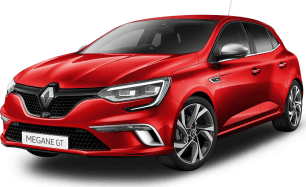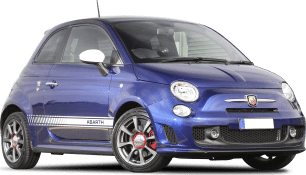The Megane RS Trophy’s cabin carries over some of the design cues from the exterior. It looks and feels like a hot hatch should.
There’s a lovely part-Nappa leather, part-Alcantara steering wheel with paddle shifters and a ‘centre line’ marker - but some may lament the lack of a flat-bottom to the wheel, which is a current trend in the “trust me I’m actually very sporty” breed of cars.
The manually adjustable seats are very supportive though they are a bit firm, so those wishing for ultimate comfort over long distance trips might be left wanting. But there is good adjustment to the seats, and they’re heated, too.
There are some nice elements to the cabin including soft plastics on the dashboard, but the lower plastics - below the eye-line - are quite hard and not very pleasant. However, the inclusion of ambient lighting does distract from that, and add a bit of flair to the cabin.
The portrait-style media screen is fine most of the time, though it does take some learning. The menus aren’t as intuitive as you might hope, with a mix of on-screen buttons and off-screen touchpad-style controls that can be difficult to hit when you’re driving. We also had a couple of instances of glitching while using Apple CarPlay and Android Auto smartphone mirroring.
Storage is okay. There are shallow cupholders between the seats, a covered centre console bin, as well as a storage section in front of the gear selector that’s big enough for a wallet and phone, and bottle holders in the doors.
In the rear seat there’s enough space for someone my size (182cm) to sit behind their own driving position, albeit with limited knee room and toe room. Headroom is good, and there are dual ISOFIX child-seat anchor points and three top-tethers for baby seats.
You’ll find a pair of small door pockets, two map pockets, and rear-seat directional air vents, which is nice. There’s a flip-down arm-rest with cupholders, too, and unlike some other high-price hatches with ambient lighting up front, the Megane gets LED light strips on its rear doors, too.
The boot space is good in the Megane RS Trophy, with luggage capacity claimed at a healthy 434 litres. On test, the car fit all three CarsGuide suitcases (124L, 95L and 36L) with room to spare. Speaking of spare (ahem), there isn’t one: it comes with a repair kit and tyre pressure monitoring, but no spare wheel of any kind.





































































